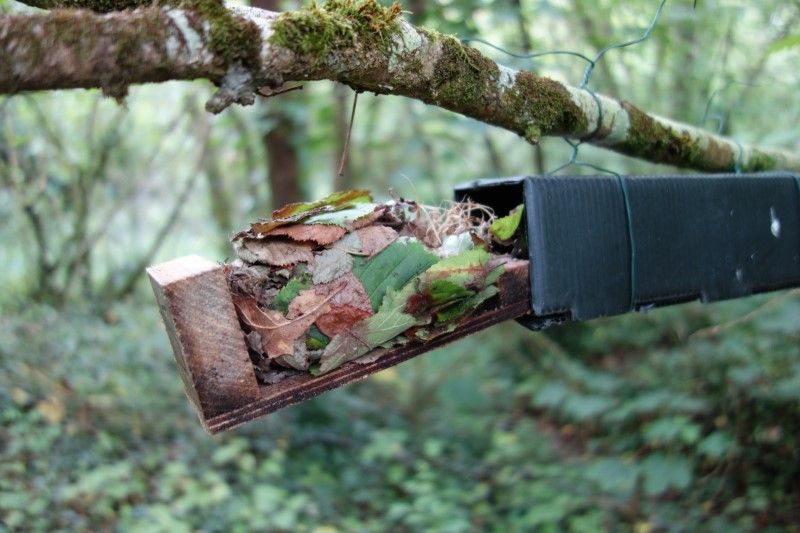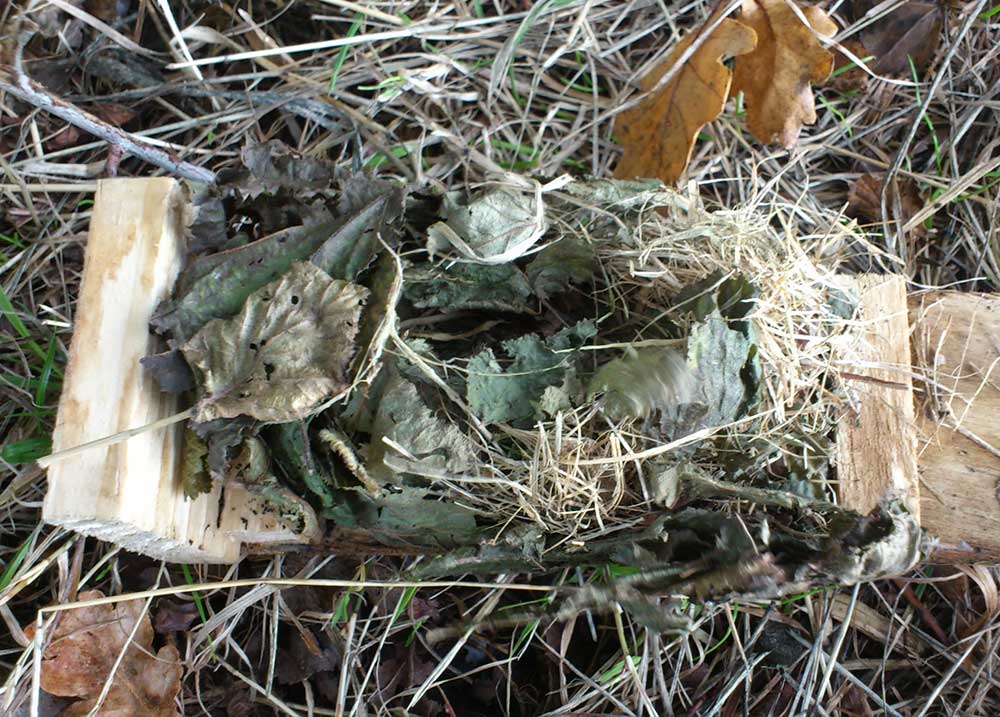Hazel dormice nest tubes

Nest tubes are an inexpensive means of detecting dormice in habitats where nut searches are unlikely to be effective. Nest tubes should be considered as an excellent tool for surveys, but not for long-term population monitoring. They can be used to used to detect the presence, or likely absence, of dormice at a site.
The tubes are made from stiff double walled black plastic sheet, 5 x 5 cm in cross section and 25 cm long. A small plywood tray is placed inside, projecting 5 cm beyond the tube’s entrance to allow the animals’ easy access. The opposite end of the tube is sealed with a wooden block mounted on the tray. Tubes can be made easily, or fruit juice cartons can be adapted but they are also available for purchase from The Mammal Society. They can be suspended by wire or tape, fixed firmly underneath horizontal limbs, where they resemble a hollow branch.
Surveying with tubes
For survey work, small numbers of tubes are likely to miss dormice, even where they are known to be present. It is recommended that at least 50 tubes be used to sample a site, spaced at about 20 m intervals (Chanin & Woods 2003). They should also be left in place for several months. Nest tubes are most frequently occupied in May and August/September/October. Timing their deployment is therefore important. Setting them out in April may get early results, while setting them out in June may be less immediately successful. It is best to leave them out for the entire season, from March onwards, for checking in November.
Using 50 nest tubes as a standard and the table below as an index of the ‘value’ of different months for surveying, a score can be devised as an indicator of the thoroughness of a survey. A minimum score of 20 is considered acceptable that dormice are unlikely to be present at a site if no evidence is found.
Nest tube data collected for conservation or mitigation surveys can be entered here.
| Month | Index of probability |
| April | 1 |
| May | 4 |
| June | 2 |
| July | 2 |
| August | 5 |
| September | 7 |
| October | 2 |
| November | 2 |

We have been working to save hazel dormice in the UK for over 20 years. Find out about our campaigns and how you can help.
